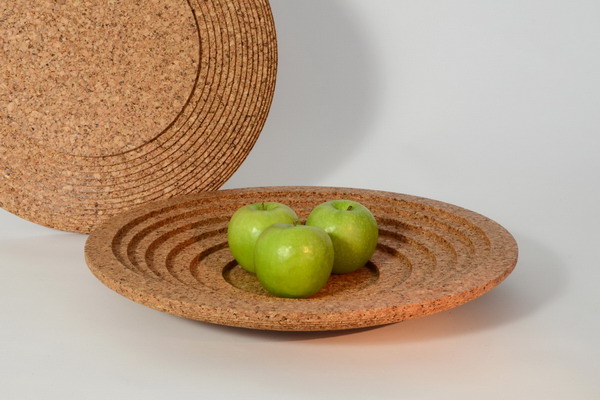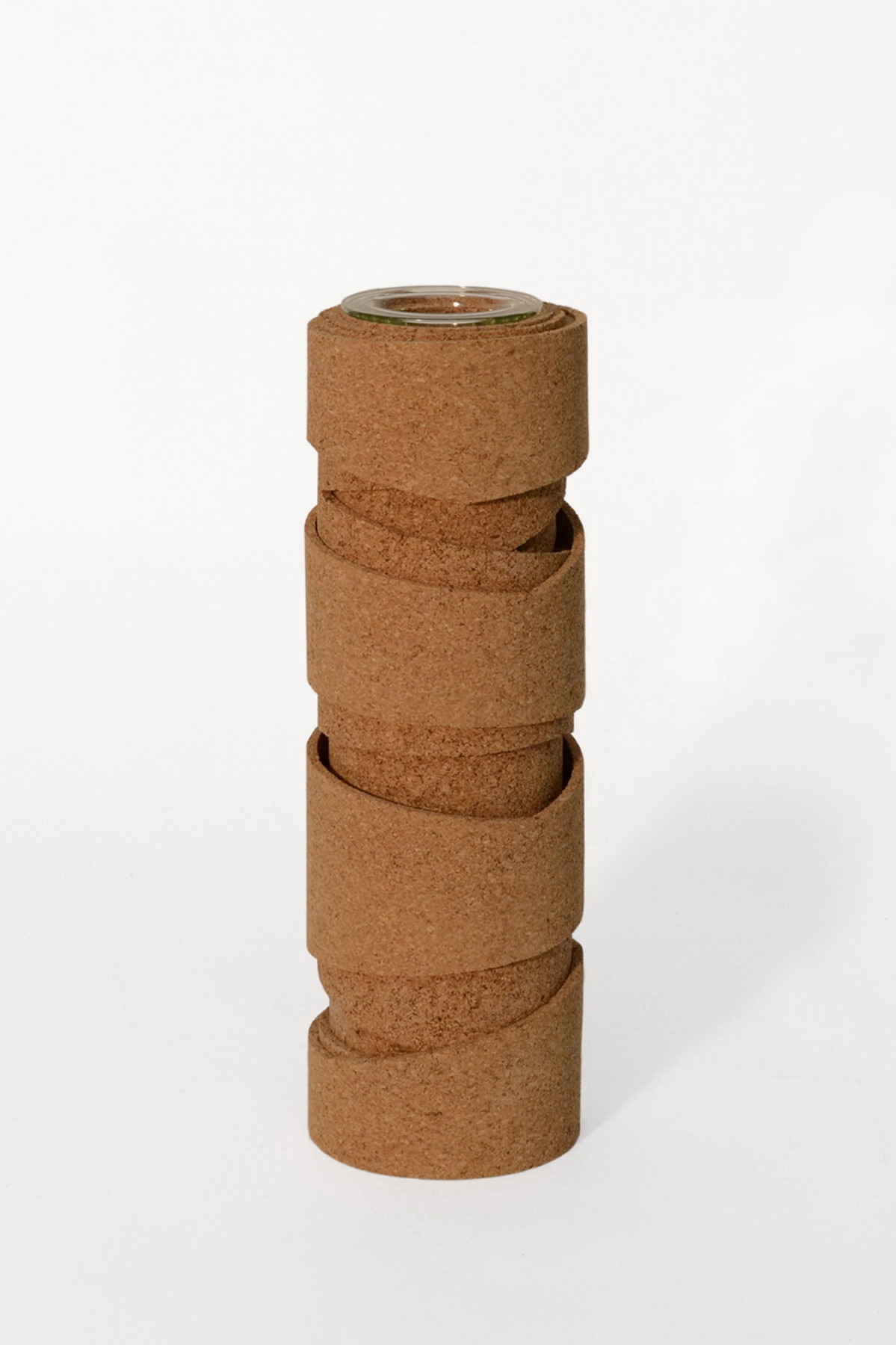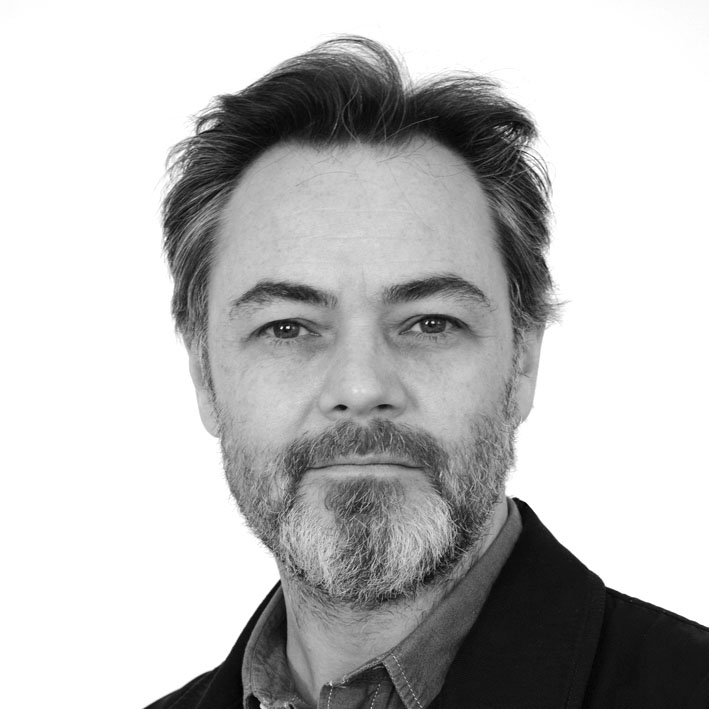
Design explorations of Sardinian cork
June 2015

A natural, renewable and sustainable material, cork is the outer bark of Quercus suber species which can be found growing throughout the Mediterranean basin, where it is often central to the local economy.
The natural forest habitats where the Quercus suber species grow contain some of the world’s highest levels of biodiversity. The bark is harvested cyclically and provides a true environmentally friendly material. The main commercial exploitation is in the production of wine stoppers. Demand for natural cork stoppers remain fairly consistent, however, more economic, synthetic alternatives are placing pressure on this traditional industry.
Working with local producers and Sardinian craftsmen, Mark Anderson designed a series of objects exploring alternative uses for agglomerated cork. Agglomerated cork is made from granulated cork which is a by-product of the manufacturing process of natural cork.

Agglomerated cork is typically produced in blocks or slabs but can also be molded in other forms. Anderson in his exploration used standard blocks and sheets as a starting point and in some cases even scraps and remnants from other processes.

“Agglomerated cork is really particular as a material; I really like the raw natural appearance that is maintained even in the final product. The small compressed fragments become not only part of the visual quality but also a technical characteristic that needs to be addressed during the design and manufacturing. In some ways the material offers little resistance from a design point of view. It’s like a solid block of wood that has no grain pattern or inherent form – in that way it offers little resistance or suggestion in terms of form. There’s an incredible formal freedom that needs to be balance with the mechanical properties of the material”.



Mark Anderson
Designer, Adj. Professor DADU
An american designer, Mark moved to Milano more than 20 years ago and since then he has been professionally involved in interior, furniture design, architecture. Mark regularly exhibits his work at Milan’s Salone del Mobile. A long time design teaching collaborator of our Department, he has a wide experience in design education.

